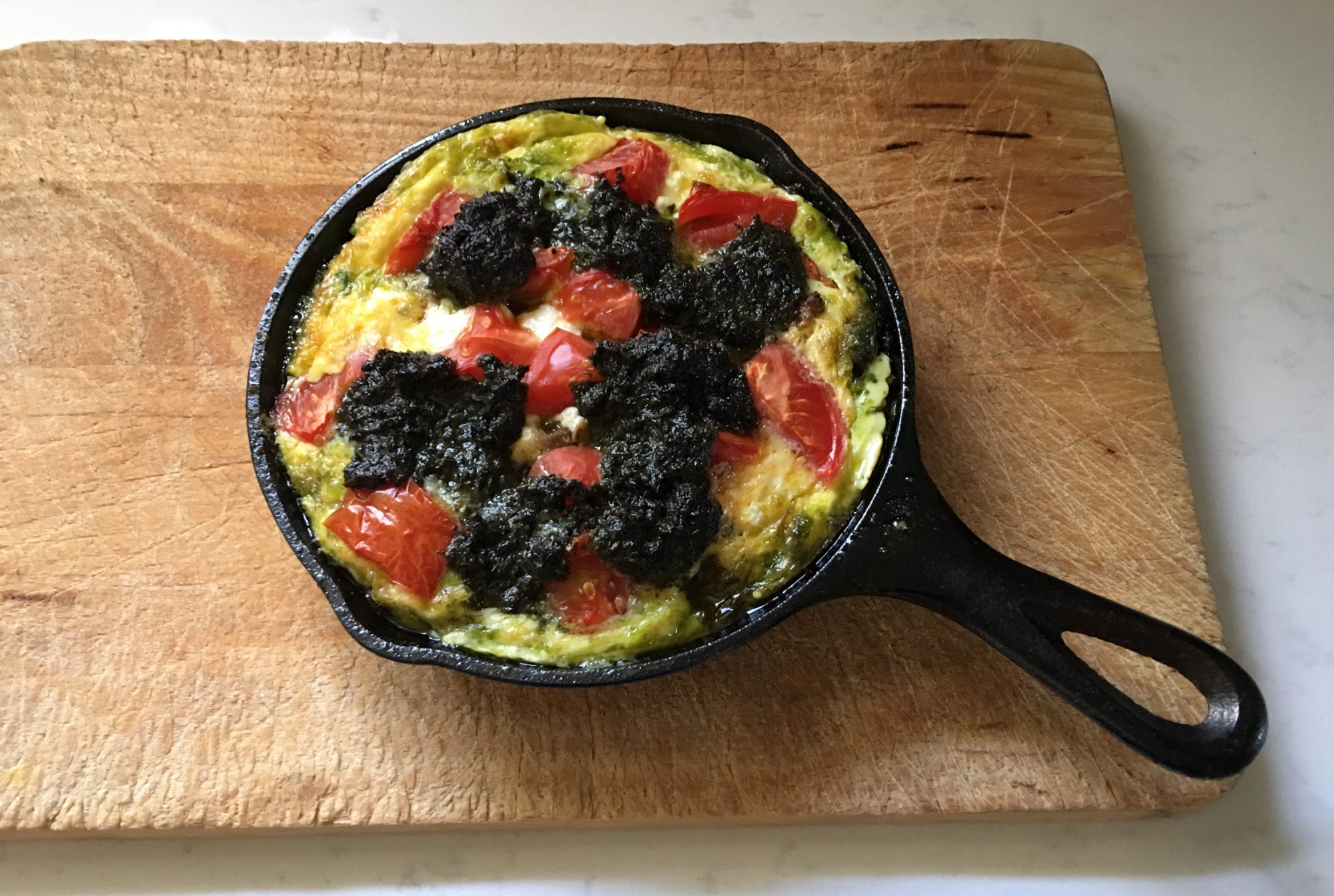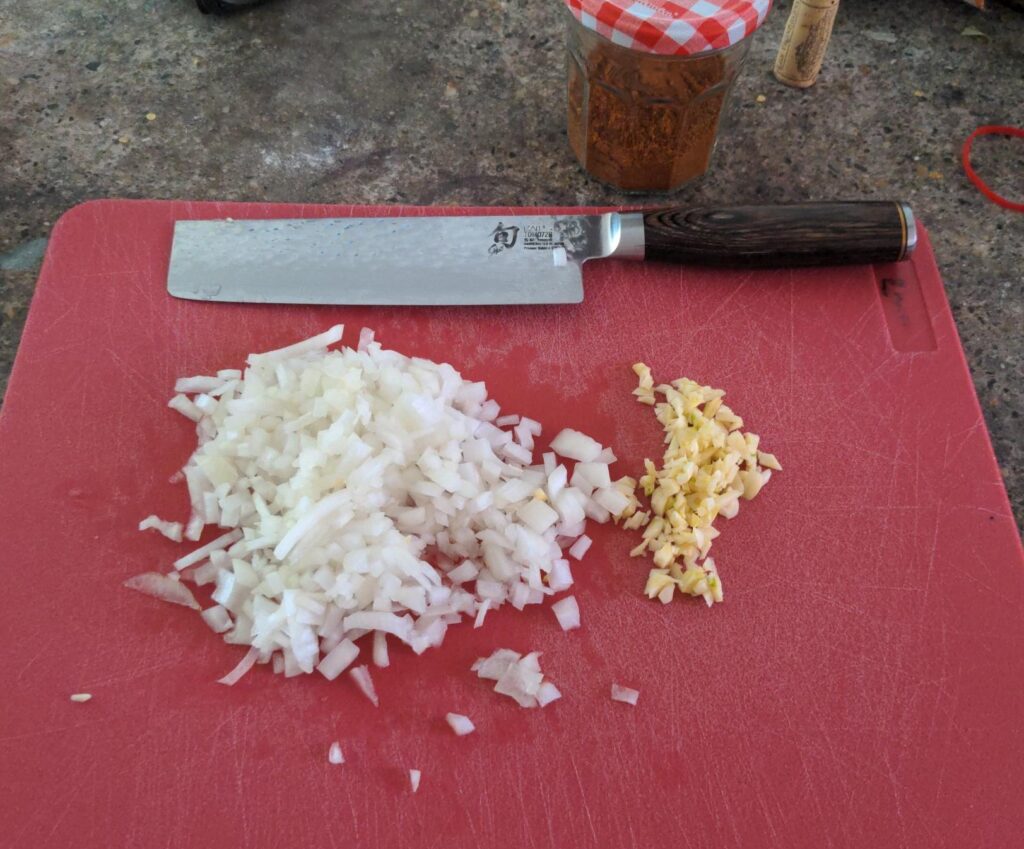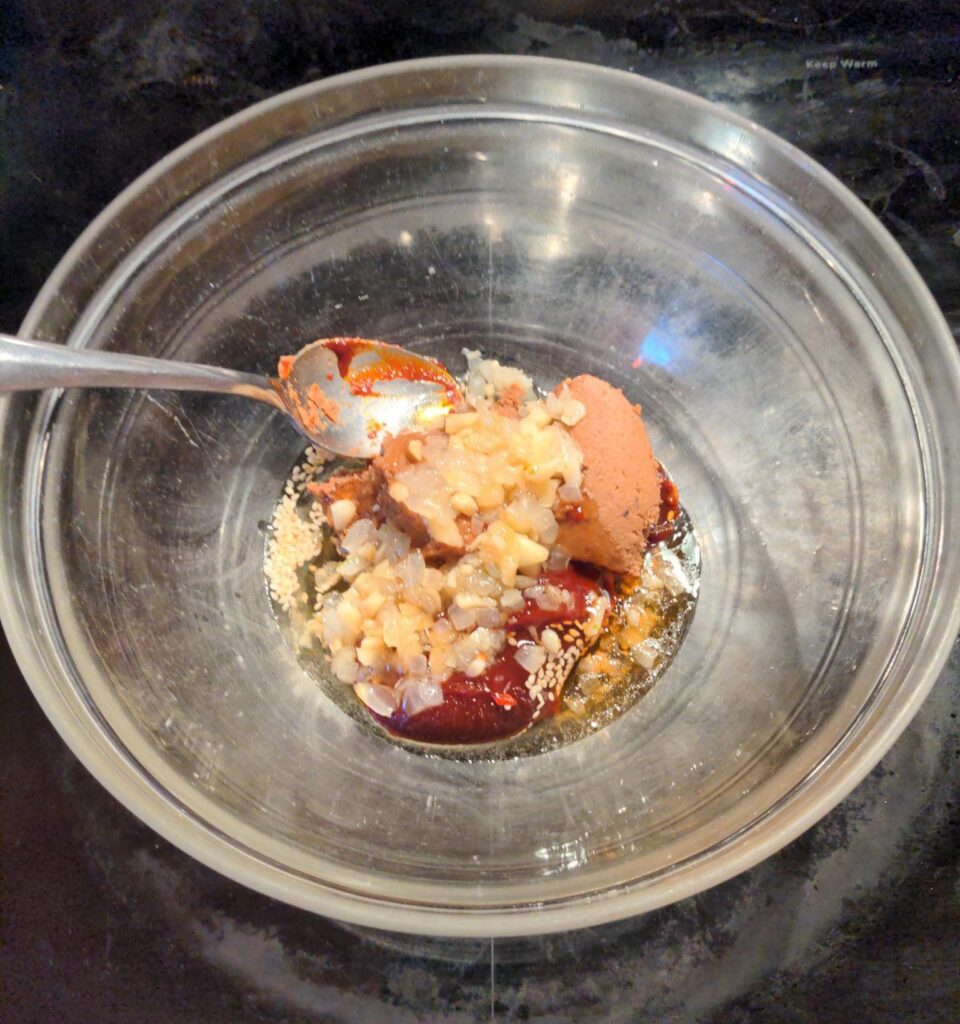Making barbecue sauce at home is pretty simple, and it it gives you some great options for sandwiches, grilling, and adding some zing to meals that would otherwise be less than interesting.
Today, I was smoking up some pork shoulder for pulled pork, and I wanted to make a Kansas City-style sauce to go with the meat (the other sauce options included an Eastern and Western Carolina-style sauce).
However, many barbecue sauce recipes use ketchup as a core ingredient, which is fine, I guess, unless you don’t have any around when you want to make barbecue sauce, or when you want more granular control over the amount and type of sugar (and other ingredients) that are used in ketchups. In this recipe I use additional tomato paste and spices in place of ketchup, and make a couple other small tweaks that worked out pretty well, so I figured I’d capture the process so that, the next time I wanted to make this sauce, I didn’t need to rely on memory.
Some notes on the recipe:
First, if you are a purist, this recipe will almost certainly offend you. This is NOT a traditional Kansas City-style sauce. It is definitely inspired by KC style, but this is not a traditional rendering of a Kansas City-style sauce. It is, however, delicious.
Second, the recipe calls for sauteeing the tomato paste and spice mixture in oil. It can be tempting to skip this step, but please, don’t! Tomato paste is a pretty magical ingredient, and when you brown tomato paste you bring out an extra depth of flavor to an ingredient that’s already pretty savory. It makes this sauce better, and you should also use this technique when making red sauces for pasta, pizza, etc.
Third, this recipe uses uses ground chipotle pepper, smoked paprika, and ground ancho pepper. These spices bring both flavor and heat; they have a nice profile, and they work well together. However, feel free to experiment and adjust to your palette. Don’t have ancho pepper? No problem! Add a little more smoked paprika, or sub chili powder or ground red pepper flakes. Want more heat? Add more chipotle, or any other hot pepper you like. You can adjust the spice profile once all the core ingredients are together to bring it in line with what you like to eat. The same is true for the sugar levels – both molasses and brown sugar bring sweetness into the sauce, but honey could be subbed for either ingredient, or used in addition. Play with the levels and identify what works for you – it’s a pretty flexible sauce, so make it work for you.
Similarly, use water to thin the sauce to your desired viscosity. This sauce should simmer on the stovetop for anywhere between 15-60 minutes, and you can add water to thin the sauce if needed.
This recipe makes around 2 cups of sauce, and takes between 15-30 minutes
Ingredients:
- 2 5 oz cans tomato paste
- 2-3 tablespoons canola oil
- 6 cloves garlic, mashed via a garlic press
- 2 teaspoons chipotle powder
- 2 teaspoons smoked paprika
- 1 tablespoon ground ancho pepper
- 1 teaspoon kosher salt
- 1/2 teaspoon allspice
- 1/8 teaspoon cloves
- 1 to 1.5 cups water
- 1/2 cup plus 2 tablespoons apple cider vinegar
- 1/2 cup brown sugar
- 1/4 cup molasses
- 1 tablespoon soy
- 1 tablespoon Worcestershire sauce
- 1 teaspoon freshly ground black pepper
Step 1:
Put the apple cider vinegar, brown sugar, molasses, soy sauce, Worcestershire sauce, and black pepper into a bowl. Set aside.
Step 2:
Measure 1 to 1.5 cups of water into a measuring cup or glass. Put next to the burner you will use for cooking.
Step 3:
Peel and mash 6 garlic cloves. Place the mashed garlic in a small bowl with chipotle, paprika, ancho, salt, allspice, and cloves.
Step 4:
Heat the canola oil in a medium-sized pan over medium-high heat. When the oil is hot, add the tomato paste and bowl of spices (from Step 3) to the oil and mix. The spice-tomato paste mixture will darken in color; stir rapidly with a wooden/bamboo spoon for 2-3 minutes.
Step 5:
Use approximately 1/4 cup water to deglaze the pan and blend any browned tomato paste back into the tomato paste-spice mix. Once the pan is deglazed, turn the heat to medium-low to low.
Step 6:
Add the vinegar, etc (mixed in Step 1) to the pan. Stir until all the ingredients are smoothly blended. Add any additional water until the sauce is as thick or thin as you want it.
Step 7:
Get a spoon, and taste the sauce. This is the base sauce, and you can adjust the flavor from here as you want. Keep in mind that the spices will intensify over time (and: don’t reuse your tasting spoon! Get that thing washed!).
Step 8:
Set the sauce to simmering on the pan, stirring regularly to ensure that the sauce doesn’t burn. If the sauce maintains a boil after you stir it, the heat is too high. Allow to simmer for 15-60 minutes – if you are using the sauce right after you make it, a longer simmer can deepen some of the flavors more quickly. You can also use the simmer to thicken up the sauce.
The flavors from the sauce will deepen over time. The sauce can be used right after you make it, but/and it will start to peak 12-24 hours after you make it. Once the sauce is made, you can keep in in the refrigerator for several weeks.



